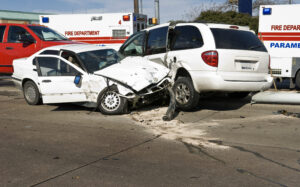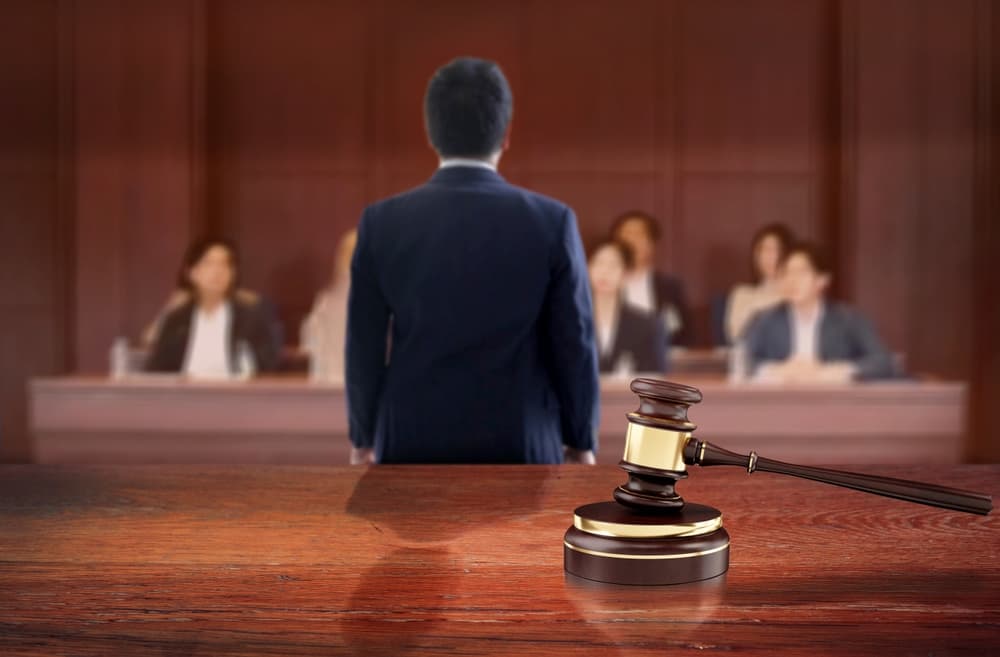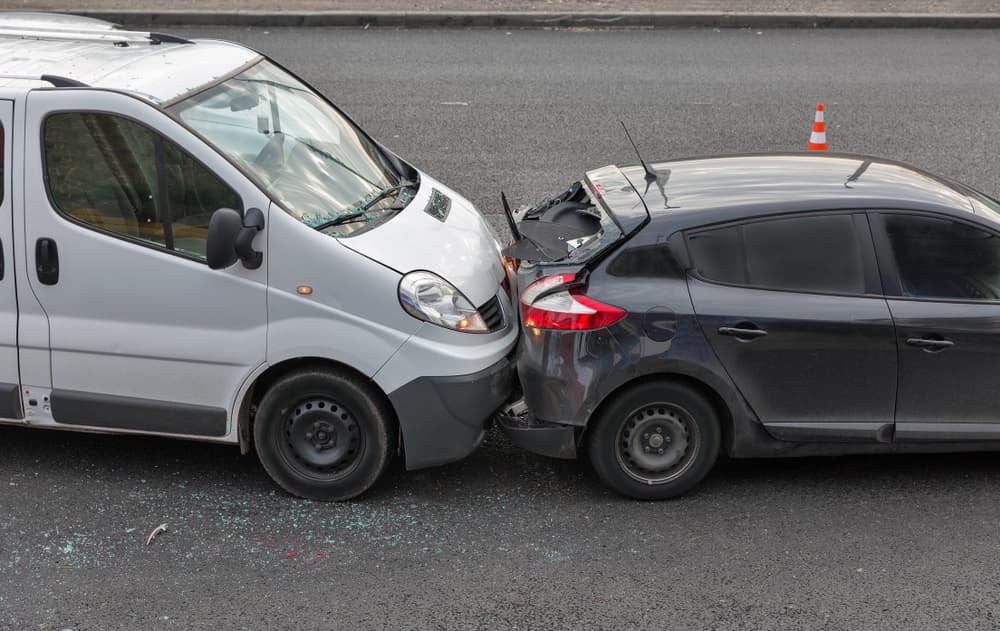
Car, bicycle, and motorcycle accidents are among the leading causes of death in the United States.
In fact, according to statistics from the National Highway Traffic Safety Administration, approximately 77 percent of all drivers have been in at least one car accident in their lifetime.
While drivers can exercise road safety measures and passengers can wear seatbelts while their vehicle is in motion, certain things may happen on the road beyond your control.
Other drivers may operate their vehicles recklessly or carelessly, and you may suffer injuries in a severe accident that they cause.
You have legal options if you suffered injuries in a motor vehicle crash resulting from another driver's negligence.
An experienced car accident attorney in your area can meet with you to discuss the circumstances of your accident, review your legal options, and help you file a claim for personal injuries.
Suppose the insurance company does not compensate you reasonably for your injuries. In that case, you have the option of filing a lawsuit and taking your case to a jury trial or binding arbitration hearing.
Steps for Staying Safe as a Vehicle Driver or Passenger
There are several essential road safety steps you can take to decrease your risk of suffering injuries on the road—and to prevent accidents from happening in the first place.
These road safety tips include wearing a seatbelt.
At the same time, your vehicle is in motion, adjusting your vehicle appropriately, performing vehicle maintenance regularly, using your car's electronic safety features, refraining from drunk driving, following speed limits and other traffic regulations, refraining from distracted driving, and ensuring that your children are secure in their car safety seats at all times.
Highway driving safety tips are crucial for ensuring safety on the road, as motor vehicle accidents often involve a very forceful collision.
Some crashes are rear-enders, where the front of one vehicle forcefully strikes the back of another vehicle.
Other common accidents involve head-on collisions, where the fronts of two vehicles collide, and sideswipe accidents, where the sides of two vehicles strike one another while traveling forward in the same direction.
Finally, T-bone accidents—or broadside collisions—occur when the front of one vehicle hits the side of another vehicle traveling on an adjacent road.
Wear Your Seatbelt
Wearing a seatbelt while your vehicle is in motion can significantly lessen the blow of a violent motor vehicle crash. In an accident, your seatbelt physically restrains you and helps prevent your body from moving forward and backward in your vehicle—and from striking something in your car, like the headrest, door frame, window, or dashboard. In short, seatbelts save lives and prevent severe injuries on the road.
According to statistics from the Centers for Disease Control (CDC), seat belts reduce the risk of death for motor vehicle passengers and drivers by approximately 45 percent. Moreover, they lessen the risk of sustaining a severe injury in a car accident by 50 percent.
When drivers get behind the wheel, they are responsible for ensuring that they are buckled up, along with any passengers they're transporting on the highway.
Limit Distractions
In addition to always wearing a seatbelt while your vehicle is in motion, you should adjust the vehicle to meet your height and weight needs.
You can adjust your rearview and side view mirrors, adjust your seat, and adjust the climate control before you start driving.
When you make these necessary adjustments, you help to minimize the risk of sustaining severe injuries in a serious crash.
For example, by setting the heat and air conditioning as necessary ahead of time, you avoid distractions on the road while you drive.
Moreover, by adjusting your rearview and side view mirrors before driving, you ensure that you have a clear, unobstructed view when you look through them.
By adjusting your seat and sitting close enough to the steering wheel while driving, you ensure that you are as comfortable as possible.
In a severe crash, this step will also ensure that your airbags deflate correctly and protect you from serious injuries.
Maintain Your Vehicle and Keep Up Your Repairs
Next, you want to ensure you take your vehicle in for regular maintenance and repairs. This is especially true if you are embarking on a long road trip.
In addition to preventing costly repairs, routine maintenance helps to ensure that your vehicle works correctly while driving on the highway—and that your vehicle does not malfunction and cause an accident.
When you take your vehicle in for a routine oil inspection or tire rotation, you can ask your mechanic to perform a visual inspection of your vehicle.
Likewise, you should use your vehicle's standard safety features while driving. These safety features, including headlights and airbags, are designed to make your driving experience more comfortable and safer than ever before.
Drivers must become familiar with the safety features of any vehicle they operate, including lane change notifications and speed warnings. You also want to make sure that you activate these safety features before embarking on a long journey.
Don't Drink & Drive
It should also go without saying, but drinking and driving never go hand-in-hand when it comes to safety on the road. Even when drivers have only a small amount to drink, they may not realize that their sensory perception, concentration, and reaction time will suffer.
Alcohol, for example, is a depressant that can severely slow down a driver's central nervous system functioning. As a result, they may be unable to stop their vehicle in time to avoid an accident on the highway.
Alcohol may also cause a driver to experience blurred vision, preventing them from even seeing another vehicle or pedestrian and causing a severe crash.
Drivers are legally intoxicated if they have a blood alcohol concentration (BAC) of at least 0.08 percent. However, commercial vehicle drivers, including truck drivers, as well as minors who are under 21 years of age, must follow stricter standards.
In addition to receiving high criminal penalties upon conviction for DUI, a driver may face civil penalties if they caused an accident that led to injuries.
Obey Local Traffic Laws
In addition to refraining from intoxicated driving, individuals must follow all traffic laws and regulations on the road, including posted signs, speed limits, and traffic control devices.
When drivers grossly exceed the speed limit, weave in and out of heavy traffic, and tailgate other drivers, they significantly increase their chances of causing an accident. The same is true when they violate other traffic laws and operate their vehicles recklessly.
Moreover, drivers have a duty to refrain from distracted driving, which is essential for safety on the road.
A distracted driver fails to observe the road. Electronic devices, including GPS navigation systems, cellular phones, and tablets, are some of the most common distractions on the road today.
Distracted drivers might look for a restaurant on a GPS device, change channels on a device, or send a text message, all of which may divert their attention away from the road. When that happens, the driver may look down—or to the side—taking their eyes completely off the road.
Even when a distraction lasts for one or two seconds, that may be sufficient time for them to miss seeing an approaching vehicle or pedestrian on the road, causing an accident.
What's in Your Car?
Finally, drivers have a duty to ensure that they properly secure their children in car seats for safety on the road. In most instances, children who are under eight years of age require an appropriate child restraint system.
For example, a child may need to use a booster seat until they reach a certain age or weight limit. Ensuring that you correctly secure your child in a car seat helps to ensure that their body does not move around the vehicle if a severe accident occurs.
Injuries That Car Crash Victims May Suffer
Even when drivers take all of the necessary precautions and follow all safety regulations for highway safety, serious accidents can still happen on the road. These accidents usually result from other drivers' recklessness, carelessness, or negligence.
Car accident victims may suffer debilitating injuries that require ongoing medical treatment, complicated procedures, physical therapy, and rehabilitation. Moreover, car accident victims may suffer pain and other symptoms—sometimes for the rest of their lives.
A car accident victim's injuries usually depend on various factors, including the force of the collision, how their body moves in the vehicle, and whether they strike something in their vehicle when the crash occurs.
Typical car accident injuries include traumatic head and brain damage, paralysis injuries, spinal cord injuries, soft tissue contusions, bone fractures, cuts, abrasions, and internal organ damage.
As soon as possible after your car accident, you should follow up at a hospital emergency room or urgent care facility for medical treatment. The provider on duty can physically examine you and order the necessary imaging studies, including x-rays and MRIs. The provider can then render an accurate medical diagnosis.
Seeking prompt, same-day medical treatment after your car accident is extremely important because it helps ensure that your injuries do not worsen on the road.
Moreover, if you later need to file a personal injury claim—or a lawsuit in court—it is less likely that the insurance company will dispute your claimed damages if you seek prompt medical treatment after your accident.
While you focus on getting better, your lawyer can begin to gather up your medical records, lost wage documentation, and other potential evidence to use in your case. Once your medical treatment is complete, your lawyer can submit these documents to the insurance company and begin negotiating a fair settlement on your behalf.
Filing a Timely Claim or Lawsuit for Safety on the Road
If you suffered injuries in a car crash on the road that resulted from another driver's carelessness, time is of the essence in your case.
Because of the statute of limitations, accident victims do not have an unlimited period to file a claim or lawsuit seeking damages.
Your lawyer can help you file a timely claim or lawsuit within two years after your accident date, safeguarding your right to pursue and recover the monetary damages you need.
The claims-filing process begins when your lawyer submits a settlement demand package, along with a demand letter, to the insurance company handling your claim.
In most instances, this is the insurance company for the at-fault driver. The parties will then typically negotiate, and if they reach a favorable settlement agreement, the case will not proceed any further.
However, if the parties reach an impasse, the accident victim's lawyer may need to file a lawsuit on the road in the court system.
Even while a personal injury case is in litigation on the road, the parties can still resolve it through settlement.
However, if the case is not resolved by the end of litigation, the parties may need to take their case to a civil jury trial, mediation hearing, or binding arbitration proceeding.
Your lawyer can explain your legal options for safety on the road and help you decide the best course of action to pursue.
Talk to an Experienced Car Accident Attorney Today
If you or a person you care about suffered injuries in a recent car crash, you should retain an experienced personal injury attorney for safety on the road in your area to represent you.
The sooner you seek legal representation on the road in your case, the better off you will be.
With a knowledgeable lawyer on board on the road in your case, you are more likely to recover reasonable monetary compensation for your injuries.
If you try to represent yourself on the road in a personal injury claim or lawsuit, the insurance company is more likely to take advantage of you and offer you far less compensation than your case is worth.
Insurance companies are often quite large and have vast resources at their disposal on the road.
They hire teams of adjusters and lawyers whose interests align with the company's. The insurance company makes a profit by paying as little as possible on the road as often as possible, and you can rest assured that it will do whatever it can to not pay you the money you deserve for safety on the road.
Your lawyer can investigate the circumstances of your accident on the road, file a claim or a lawsuit on your behalf on the road, and assist you during settlement negotiations on the road.
Moreover, if your case must go to court on the road, your lawyer can advocate on your behalf and aggressively pursue the monetary damages you deserve on the road.
Those damages may include compensation for your medical expenses, lost earnings, pain and suffering, inconvenience, loss of life enjoyment, loss of the ability to use a body part, permanent disability, and loss of spousal companionship on the road.



